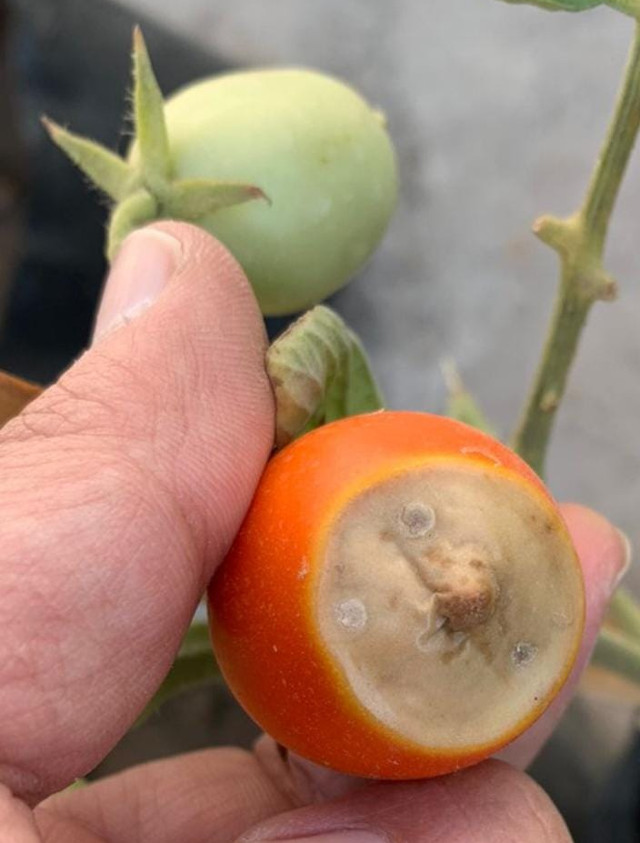Tomatoes are one of the most popular and rewarding plants to grow in the home garden, providing a bountiful harvest of delicious and nutritious fruit. However, one of the most common issues that can arise is tomato bottom rot, which can lead to the loss of fruit and damage to the plant. In this article, we will explore the causes of tomato bottom rot and provide tips on how to prevent it.
Causes of Tomato Bottom Rot
Tomato bottom rot is characterized by the development of dark, sunken spots at the blossom end of the fruit, which can eventually turn black and become leathery in texture. This condition is caused by a calcium deficiency in the plant, which can result from a variety of factors, including inconsistent watering, high salt levels in the soil, and soil pH imbalances.
Inconsistent Watering
One of the primary causes of tomato bottom rot is inconsistent watering, which can lead to stress in the plant and result in nutrient deficiencies. When a tomato plant experiences dry periods followed by periods of heavy watering, the plant can become stressed and struggle to absorb calcium from the soil. This can cause calcium to become trapped in the root system, rather than being transported to the fruit. To prevent this, water tomato plants deeply and consistently, ensuring that the soil is moist but not waterlogged.
High Salt Levels in the Soil
Another factor that can contribute to tomato bottom rot is high salt levels in the soil. This can occur when too much fertilizer is applied, or when soil has poor drainage, causing water to evaporate and leave behind a concentration of salt. To prevent this, avoid over-fertilizing and use a balanced fertilizer that is not too high in salts. Additionally, improve drainage in the soil by adding organic matter such as compost, which can improve soil structure and increase water-holding capacity.
Soil pH Imbalances
Tomato plants prefer slightly acidic soil with a pH between 6.0 and 6.8. If the soil is too alkaline, it can prevent the uptake of calcium by the plant, which can contribute to the development of tomato bottom rot. To prevent this, test the pH of your soil using a soil testing kit, and adjust the pH as needed by adding sulfur or other amendments.
Preventing Tomato Bottom Rot
Fortunately, there are several steps you can take to prevent tomato bottom rot and ensure healthy plants and a bountiful harvest. Tomato bottom rot is a common problem that can be caused by a calcium deficiency in the soil, irregular watering, or high salt levels in the soil. Here are some steps you can take to get rid of tomato bottom rot:
Watering
Consistent and deep watering is crucial for preventing tomato bottom rot. Make sure to water your plants deeply and regularly, keeping the soil evenly moist. Avoid overwatering or under-watering the plants, which can lead to stress and nutrient deficiencies.
If you are unsure of how often to water your plants, a general rule of thumb is to water deeply once a week. However, you should adjust your watering schedule depending on your climate and soil conditions.
Soil testing
Conduct a soil test to determine if your soil lacks calcium. If your soil is calcium-deficient, you can add lime or gypsum to the soil to increase calcium levels. You can also use a calcium-rich fertilizer, such as bone meal or eggshells, to boost the soil’s calcium content.
Keep in mind that adding too much lime can make the soil too alkaline, which can lead to other nutrient deficiencies. Be sure to follow the manufacturer’s instructions and conduct regular soil tests to ensure your soil is balanced.
Mulching
Mulching around the base of the tomato plant with organic materials like straw or leaves can help retain moisture and regulate soil temperature. This can reduce the incidence of water stress and help prevent calcium deficiencies.
Additionally, mulching can help suppress weeds and reduce soil compaction, which can improve overall plant health.
Fertilizing
Use a balanced fertilizer that is high in phosphorus and calcium. Phosphorus is important for root development, while calcium is important for cell growth and development. Be sure to follow the manufacturer’s instructions when applying fertilizer.
Avoid using high-nitrogen fertilizers, which can promote excessive foliage growth at the expense of fruit development. Overfertilizing can also lead to high salt levels in the soil, which can exacerbate tomato bottom rot.
Avoiding high salt levels
Over-fertilizing or using high-salt fertilizers can increase the salt content in the soil, which can lead to water stress and nutrient deficiencies. Use fertilizers sparingly and avoid applying them during hot, dry weather.
Removing affected fruits
If you notice any fruits with tomato bottom rot, remove them immediately. This can prevent the spread of the disease to other fruits.
Make sure to dispose of affected fruits in the trash or compost pile, rather than leaving them on the ground. This can help prevent the disease from overwintering in the soil and infecting future crops.
By following these steps, you can prevent or reduce the occurrence of tomato bottom rot and help your tomato plants grow healthy and strong. Remember to regularly monitor your plants for signs of stress and disease, and take action as needed to keep them healthy. With proper care and attention, your tomato plants can produce a bountiful harvest of delicious and nutritious fruits.
